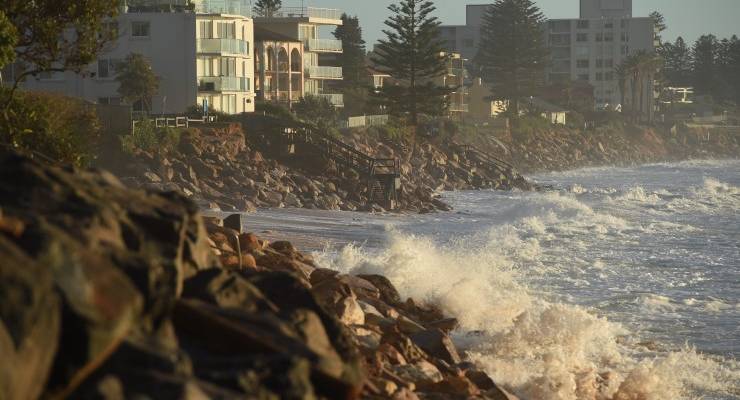
This is part three of Australia’s Collapsing Coast. Read parts one and two here.
More than 85% of Australia’s population lives within 50km of a coastline that is crumbling into the sea.
Experts estimate there are hundreds of beaches and coastal communities around the country that are either in the process of collapsing, or at risk of doing so.
Within decades, as sea levels rise and coasts continue to erode, that number could be in the thousands.
According to the Climate Council, over half the Australian coastline is vulnerable to recession from rising sea level. 80% of the Victorian coast and 62% of the Queensland coast is at risk.
During the last century, global sea levels rose about 15cm. Seas are now rising at more than twice that rate — 3.6mm per year. And that rate is continuing to accelerate.
Victorian Marine and Coastal Council chair Anthony Boxshall told Inq that even with our Paris Agreement targets, a further 30-60cm of sea level rise is locked in. Australia is not on track to meet its Paris targets.
So what is to be done? On this front there is some good news, and a lot of extremely bad news.
While some communities may have no choice but to retreat, individual beaches can possibly be saved. Professor Andrew Short of the University of Sydney told Inq beach nourishment — artificially pumping sand onto the beach, as is done on the Gold Coast — would be a good option for more popular beaches.
“It might be expensive, but then you’ve got to put a dollar value on what Bondi’s worth,” Short said. “When you look at it from a cost-benefit analysis, it would be a very good way to go.”
The National Climate Change Adaptation Research Facility spent years mapping Australia’s coasts, giving us the most complete picture yet of high erosion hotspots, and some idea of what these areas will look like by the end of the century. It worked with decision makers like local councils on how to adapt to rising sea levels. However, the facility’s federal funding dried up in 2018, and there are no plans for it to resume.
Faced with the federal government’s recalcitrance, local councils who are at the coalface of the battle are taking matters into their own hands. In July last year, Noosa Shire Council became the first local government area in Queensland to declare a climate emergency. While erosion hasn’t escalated there yet, Noosa Mayor Tony Wellington told Inq that a 0.8 metre sea level rise could put 2000 properties at risk.
Wellington also said that while the climate emergency declaration was symbolic, they were backing it up with real action.
“In 2016, the council announced an emissions reduction policy, which included a commitment to zero net emissions by 2026, and the following year, we developed our coastal hazard adaptation plan,” Wellington said.
Noosa’s commitment is about ensuring climate-related risks are considered across all council areas, particularly around development. But even that has drawn opposition — Wellington said the emergency declaration was met with “bouquets and brickbats”, and the council could face legal challenges over some of its climate-related planning decisions.
Whatever the solution, it will require a level of national coordination that’s not been evident so far.
“You can’t look at these things in isolation,” Dr Mick O’Leary, a senior lecturer at University of Western Australia, told Inq. “It’s a river of sand that runs along the coast.”
In any event, pumping in sand or setting up a seawall won’t address the biggest threat to the future of our beaches: the systemic failure of climate change policy in this country. Indeed, an ominous clue can be found in the approach taken by insurance companies. Although it is possible to obtain insurance for storm surge and erosion, no insurance company offers cover for sea-level rise.
For many communities and much of the infrastructure close to the ocean, the future is sealed; erosion is a natural process. Climate change is going to make it worse. The tide cannot be stopped.
Boxshall said that until recently, it was easier to delay acting on climate change because the consequences seemed so distant.
“They call it the tragedy of the horizon.”









Crikey is committed to hosting lively discussions. Help us keep the conversation useful, interesting and welcoming. We aim to publish comments quickly in the interest of promoting robust conversation, but we’re a small team and we deploy filters to protect against legal risk. Occasionally your comment may be held up while we review, but we’re working as fast as we can to keep the conversation rolling.
The Crikey comment section is members-only content. Please subscribe to leave a comment.
The Crikey comment section is members-only content. Please login to leave a comment.